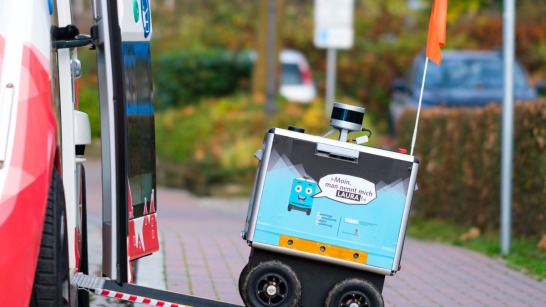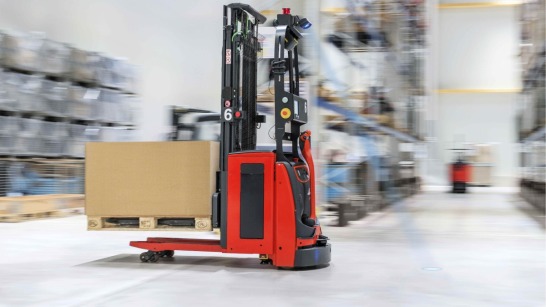The current research project now centres on the use of an AI that "gives eyes" to the transport robot locally and in real time. The smart control centre is designed to help the robot make direct and rational decisions on site.
Dr. Johannes Hickeldeyn, Global Research Manager at Robotic Systems Development at STILL, is in close contact with the research team on behalf of the KION GROUP. He explains: "A large amount of data is analysed and processed in real time. For example, AI systems can use sensors and cameras to record and analyse the truck's surroundings, such as current traffic, weather or road conditions."
They can also use historical data to make predictions and decisions based on past experience.
In addition, AI systems can also react to human behaviour patterns. For example, an autonomous vehicle that recognises a pedestrian stepping onto the road can immediately perform emergency braking to avoid a collision.
The aim of such AI systems for autonomous vehicles should be to adapt to the constantly changing conditions on the road and make quick, precise and safe decisions, taking into account the different levels of automation that describe the tasks a vehicle can perform. In (highly) automated driving (level 3), for example, the vehicle only takes control and monitors the journey in selected situations. With fully automated (level 4) or autonomous driving (level 5), on the other hand, the vehicle takes over the entire control and monitoring of the journey in all situations. The passengers therefore become passengers.
The project, which is scheduled to run for two years, is being funded by the Federal Ministry for Digital and Transport, among others, as it is about "a future-proof, sustainable mobility system through automated driving and networking". In addition to the KION GROUP and other local companies, the Hamburg University of Technology, the Institute of Technical Logistics (ITL) and the Institute of Transport Planning and Logistics (VPL) as well as the district of Herzogentum Lauenburg and the city of Lauenburg are also on board.



_image_546x307.jpg)
